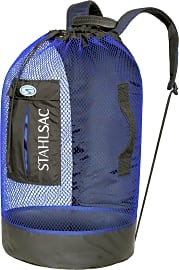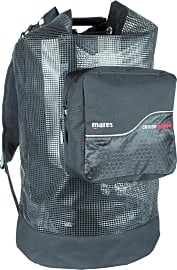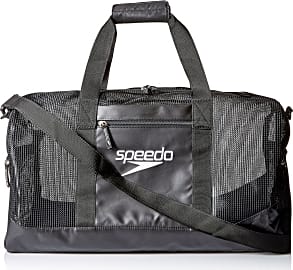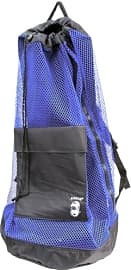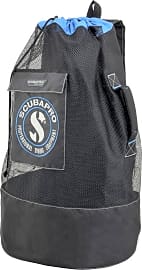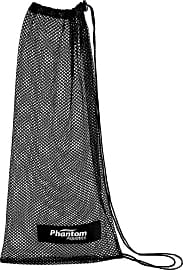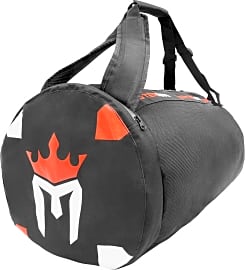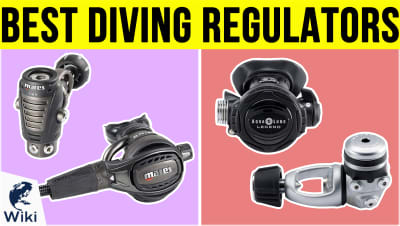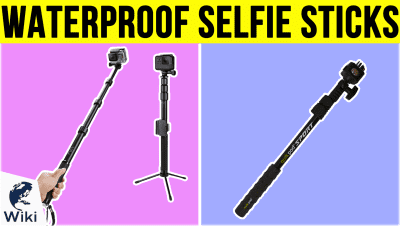The 10 Best Mesh Dive Bags

This wiki has been updated 43 times since it was first published in April of 2016. If you have never been scuba diving with tropical fish, drop what you are doing and try it now. It's awesome! And for those who already enjoy underwater adventures, take a look at these mesh dive bags. Not only will they let you lug all your gear with ease, but the ventilated designs allow for good air circulation, which helps to eliminate odors and control mildew when storing stuff between trips. When users buy our independently chosen editorial selections, we may earn commissions to help fund the Wiki.
Editor's Notes
April 07, 2020:
Those who are familiar with dive gear will probably not be surprised to see some of the names in the top spots. These include the Aqua Lung Explorer, a padded mesh duffel with an ample amount of anchor loops; the Tusa Roller, the choice for those who are tired of lugging gear on their backs; and the Stahlsac Panama, a relatively uncomplicated backpack that comes in a variety of colors and boasts several handy pockets. For those who want a highly versatile option, we've kept the Speedo Ventilator, a great mesh sports duffel that works equally well for triathletes as it does for divers. If you need something simpler than the aforementioned, consider instead the Phantom Aquatics Swim Fin. As you might guess, it's a fine choice for holding a pair of swim fins, but not for holding pieces of gear that are much larger.
Finally, we've decided to add the Meister Duffel on the strength of its convertible duffel/backpack design. On the other hand, the zippers are something of a weak point, so if you're the type who is rough on bags, it may not be the best bet. Stick to something sturdier, like the Innovative Dive Flag, although you'll need to provide your own shoulder strap or purchase one separately.
Special Honors
Gili Gear Bag LG The Gili Gear Bag LG boasts repurposed vinyl mesh that's both eco-friendly and visually interesting. To make hauling easier, it's got a handle on each end as well as a shoulder strap with neoprene for your comfort. giligear.com
ScubaPro Mesh'N Roll The ScubaPro Mesh'N Roll is definitely not cheap, but it ticks all the boxes in terms of durability: heavy-duty mesh, sturdy YKK zipper, off-road style wheels, and more. As the name suggests, it rolls for hassle-free transport, but if you need to pick it up and carry it, you can do that too thanks to the adjustable straps. scubapro.johnsonoutdoors.com
A Brief History Of Diving
He even included a pouch that would enable the diver to attend to the calls of nature while underwater — because da Vinci thought of everything.
The first divers were likely Mesopotamians in search of pearls, as artifacts from as early as 6000 B.C.E. depict free divers snagging oysters in the Persian Gulf. Pearl diving is even mentioned in The Epic of Gilgamesh, where the jewels are described as the "flower of immortality."
During the Peloponnesian War, Greek divers circumvented blockades by going under them, allowing the divers to come in contact with otherwise stranded allies. They would also drill holes in enemy boats, and when those ships sank, the divers would rummage around for valuable salvage.
Diving bells were used in the 16th century C.E. to stay underwater for longer periods of time. These were huge bells that would be lowered directly into the sea, trapping a giant air bubble underneath them. The divers would be lowered with the bell, and could swim to the bell whenever they needed to take a breath.
Leonardo da Vinci experimented with fins and goggles around that same time, and he made a leather diving suit with two hollow breathing tubes that extended to the surface. He even included a pouch that would enable the diver to attend to the calls of nature while underwater — because da Vinci thought of everything.
In 1771, a Frenchman known only as Fréminet built a brass breathing helmet with eye holes. It contained a small reservoir, and while it worked, it didn't allow people to stay underwater for very long. In the ensuing decades, other inventors attempted to improve on Fréminet's design, but with lackluster results.
The next big breakthrough in diving technology would come from a predictable place: horses. A fire at a barn in England threatened the lives of several stallions, and so a man named John Deane grabbed the helmet off a nearby medieval suit of armor and had firefighters pump air inside. This allowed him to enter the blaze and save the animals. Deane believed his new firefighting helmet would be suitable for diving, as well, and in 1828 he debuted an entire diving suit made of fabric and with weighted boots to be paired with one of his modified helmets.
Since the helmet wasn't attached to the suit, air would leak out the bottom, and divers had to stay completely upright the entire time they were underwater. Still, that small design flaw notwithstanding, the suit was a success. A German designer named Augustus Siebe fixed this by sealing the helmet and giving it a functional exhaust system.
These innovations brought with them new complications; namely, the fact that going deeper than ever before put incredible pressure on the body. This necessitated a host of new innovations, including regulators, air pumps, and more.
In 1942, two Frenchmen, Emile Gagnan and Jacques Cousteau, created the Aqua-Lung, which was a suit that released fresh air on demand. It was the first known self-contained underwater breathing apparatus — and so SCUBA gear was born.
Today, millions of people go diving every year, for both commercial and recreational purposes. The ocean's depths are slowly becoming more accessible, and it's easier than ever to explore the underwater world.
Just stay out of the depths of the Pacific. That's where Cthulhu lives.
Benefits Of A Mesh Diving Bag
There's a wide variety of diving bags to consider, but mesh bags have quite a few advantages over the rest of the options out there.
The biggest is the fact that mesh drains easily. You can just toss all your gear in the bag and let it dry on the boat ride back to shore, and you won't have to dump a small lake out of your carrying case when you get there.
Mesh makes cleaning your gear a breeze, as well, as you don't even have to take it out of the bag.
Having a dry bag is essential to avoiding nasty odors, or even worse things like mold. After all, how likely are you to take the time to wipe your bag down after a long, exhausting day spent among the coral?
Mesh makes cleaning your gear a breeze, as well, as you don't even have to take it out of the bag. You can just hose it down right there on the dock and then go about your day. Many bags also have sealed compartments, so you can protect sensitive gear from water or prevent your wetsuit from soaking the rest of your stuff.
Scuba diving is expensive as it is, so you'll be glad to learn that a mesh bag is likely to last for a long time. The mesh itself should be very durable as long as you aren't too reckless with it, so you can have a bag that lasts almost as long as your interest in diving does.
Important Features To Look For In A Dive Bag
Diving requires a lot of gear: your mask, flippers, regulator, selfie stick, and a whole lot more. As a result, it's of paramount importance that your bag be big enough to hold all that stuff — and hold it securely.
On the other hand, if you have a ton of heavy gear, you might want something with wheels or duffel-style handles.
Of course, holding it securely is only half the battle, as you'll also need to be able to get to it quickly, so be sure to examine your zippers. They should be resistant to saltwater, as the last thing you want is for them to crust up and become worthless after only a few dives. Make sure the zipper action is clean while you're at it.
Check the quality of the fabric, as well. A fabric with a high denier count is preferred, as it will be more likely to withstand any abuse you put it through. Look at the seams, too, to make sure they've been strongly reinforced.
Decide on what style of bag you prefer, as they come in all manner of designs. Backpacks tend to be very versatile, allowing you to transition from a dive in the ocean to a trek through the jungle with ease. On the other hand, if you have a ton of heavy gear, you might want something with wheels or duffel-style handles.
Once you have a bag that meets all your requirements, you'll be more than ready to take a voyage to the bottom of the sea — or at least pick up all the toys at the bottom of your pool.


